-
Content count
287 -
Joined
-
Last visited
Posts posted by -bijanto-
-
-
This is the worst thread I've ever seen here
-
Check this paper from Journal of Ethnopharmacology: "Tabernaemontana L. (Apocynaceae): A Review of Its Taxonomy, Phytochemistry, Ethnobotany and Pharmacology" by T.A. Van Beek et.al. (1983):
www.puzzlepiece.org/ibogaine/literature/vanbeek1984.pdf
Here's the entry for T. orientalis (page #14):
Tabernaemontana orientalis R. Br. 1810:468
Synonym: Ervatamia orientalis, E.obtusiuscula, E.daemeliana, E.lifuana.
Further investigation will almost certainly show that T. orientalis has more synonyms, but much additional material will have to be studied..... T. orientalis is closely related to T.divaricata......
The paper lists pandacaqui as a distinct species than orientalis.
Also if you look at another page there which describes alkaloid content of each species, T. orientalis contains ibogaine while T. pandacaqui doesn't.
-
A friend from USA would like to buy some Goodenia ovata seeds from Nindethana, a company based in Australia. The problem is, the phytosanitary certificate is like $80.00. That is way to expensive for him, and he would prefer to have someone in Australia like on shaman-australis possibly buy them and send them to him. He can pay the cost, the shipping, and a little extra for them doing it for him.
http://www.nindethana.iinet.net.au/
Anyone can help?
-
Actually the Genus name I'm talking about is Garcinia, i.e. the Garcinia kola, which is called the Bitter Cola. I'm not talking about Cola sp., and both papers I quote, they all refer to Garcinia kola, not gotu kola (as in Centella asiatica).
The main confusion rises in the comparative study of the paper #1 and the paper #2 as follows:
#1 paper says: "Germination percentage was low for Garcinia kola because of its dormancy and impenetrable seed coat."
#2 paper says: "The thin leathery seed cover is not a barrier to water penetration in the embryo, however, decoating or ethanol treatments (soaking in 70% ethanol solution for 1 to 2 hours) can increase germination to >90% after c. 5 months."
If the the thin seed coat is not a barrier to water penetration in the embryo, then what's the point of decoating, or nicking?
Here's the #1 paper I'm referring to (from the World Agroforestry):
===========================================
ENHANCING GERMINATION OF BITTER COLA (GARCINIA KOLA) HECKEL: PROSPECTS FOR AGROFORESTRY FARMERS IN THE NIGER DELTA
P. O. Anegbeh, C. Iruka, and C. Nkirika
World Agroforestry Centre (ICRAF), International Institute of Tropical Agriculture (IITA)
IITA High Rainfall Station, Onne, P. M. B. 008, Nchia-Eleme, Rivers State, Nigeria
Email: [email protected] or [email protected]
ABSTRACT
The study on enhancing germination of Garcinia kola was conducted using 5 pre-treatments. These included soaking seeds in cold water for 96, 72, and 48 hours for treatments 1, 2, and 3 respectively, cutting seeds at the opposite end to the radicle with kitchen knife (nicking) for treatment 4 and control treatment (untreated seeds for treatment 5). The aim of this study was to determine the best pre-treatment for optimum germination of Garcinia kola “seed”. Germination tests were carried out after pre-treatments for 10 months using one hundred seeds for each treatment in ICRAF nursery established at IITA station in Onne, Niger Delta Region of Nigeria. The result showed that seed cutting (nicking) was the most suitable pre-sowing treatment to increase seed germination of Garcinia kola. In the first 6 weeks of testing, germination did not occur in all the treatments. From the seventh week, germination commenced in treatments 1 and 4. Whereas treating the seeds with mechanical scarification (nicking) significantly (P<0.05) enhanced germination of Garcinia kola, seed germination was also significantly (P<0.05) improved, at least for up to 33 weeks, by soaking the seeds in cold water for 96 hours. The wide variation in germination percentage, germination rate and germination speed of G. kola depended on dormancy that was overcome by seed treatments prior to sowing.
Key words: bitter cola, Garcinia kola, germination, scarification.
INTRODUCTION
Garcinia kola Heckel, often called bitter kola, is an indigenous medicinal tree belonging to the family Guttiferae. Morphologically, Garcinia kola resembles Allanblackia floribunda. It is well branched, evergreen, and grown as a medium size tree, reaching 12 m high in 12 years, and found in moist forests throughout West and Central Africa. Garcinia kola has regular fruiting cycle and the tree produces fruits every year. The species is one of the most important trees valued in Nigeria for its medicinal seeds and its exploitation in the natural forests has been very heavy.
The seeds of G. kola have pharmacological uses in treating coughs, throat infections, bronchitis, hepatitis (inflammation of the liver), liver disorders (Farombi et al., 2005). According to Adegoke et al., (1998), seeds of G. kola have inhibitory effects on lipid peroxidation in rat liver homogenates. The seeds which serve as a bitter stimulant also serve as snake repellent when they are placed round the compound (Nair, 1990; Daily Champion, 2004). Other medicinal uses include: purgative, antiparasitic, antimicrobial. The seeds are used to prevent and relieve colic, cure head or chest colds. The seeds constituents include—biflavonoids, xanthones and benzophenones. The antimicrobial properties of this plant are attributed to the benzophenones, flavanones. This plant has shown bronchodilator effect (Orie and Ekon, 1993), anti-inflammatory, antimicrobial, antibacterial and antiviral properties (Ebana et al., 1991; Akoachere et al., 2004). In laboratory tests, Garcinia kola was found to halt the deadly disease caused by Ebola virus in its tracks. The virus causes Ebola haemorrhagic fever - an often-fatal condition. Compounds from the plant have also proved effective against some strains of flu, a contagious respiratory disease also commonly known as influenza (Iwu, 1993). Its by-products are also useful: the wood makes excellent fuel wood; its dense rounded crown makes it an ideal tree for shade around homestead; the branches are used as chewing stick because of its bitter taste and antibacterial activities of its extracts (Taiwo et al., 1999).
In Nigeria, low populations of G. kola are found in home gardens and few stands are found in the wild due to rapid deforestation and heavy exploitation in the natural forests. These factors seriously depleted the populations of the species. But demand for G. kola is currently very high in Nigeria and though few seeds are available in the markets, production of the species is limited due to problem of seed dormancy. The seeds need to be treated to enhance germination. During a priority setting exercise, Garcinia kola was one of the useful indigenous trees prioritized by farmers in West and Central Africa. For many farmers who practice agroforestry, medicinal and fruit trees turn out to have higher priority. However, it is unlikely that rural farmers would plant G. kola on a large scale because the untreated seeds are difficult to germinate. Discouragingly, farmers believe that germination of G. kola takes about six to twelve months and that only few seeds germinate. They also believe that the tree takes a longer time of about eight to ten years to reach reproductive phase. According to Anegbeh, et al., (2005) early flowering and fruiting of very useful indigenous fruit trees enhance food security and harness rural livelihoods.
The challenges to development institutions are to help overcome these problems and to respond to priorities of rural communities, especially in the area of conserving highly endangered and valued species. Information on improving the germination of G. kola is not available in the Niger Delta Region of Nigeria. Therefore, the objective of this study was to break dormancy and improve germination of G. kola within a short time and make the information available to farmers.
MATERIALS AND METHODS
The study was conducted at the International Institute of Tropical Agriculture (IITA) High Rainfall Station, Onne, Nigeria (40 51' N 70 03' E). The Station receives a mean annual rainfall of 2,400 mm. The soil is an Ultisol derived from coastal sediments. They are strongly acidic (pH 4.4) and of low fertility. They are classified as siliceous, isohyperthermic, typic paleudult. The soil is deep, well drained with good physical properties but chemically poor. Temperature varies from 270 C in February and March (warmest months) to 250 C in July (coolest month). Relative humidity varies from 78% in February (driest month) to 89% in July (rainy month). Sunshine also varies from 2 hrs/day (September) to 6hrs/day (February).
Genetically representative fruit samples were collected in 2000 from trees growing in home gardens at Ilile village (Imo State) and Ibiaku Ikot Edet village (Akwa Ibom State) in the Niger Delta Region of Nigeria to increase genetic diversity. This involved random population sampling of 50 to 100 fruits on an individual tree basis to ensure that selection of a particular tree was not influenced by another tree. Ripe fruits of the trees were collected from all parts of the crown since they might have been pollinated by different pollen sources. The containers used for collecting fruits resulted in an open packing arrangement that gave better flow of air around the fruits and thereby facilitated drying and reduced the hazards of mould and decay. Collecting fallen fruits and seeds was avoided because of uncertainty regarding their source; risks of contamination from morphologically similar seeds of nearby related species; their lower physiological quality; and greater risks of contamination of the fruit with soil-borne pathogenic fungi. The bulked seed lot was thoroughly mixed and transported to ICRAF nursery. The seeds were extracted from the fruits at the nursery , washed in clean water and air dried for one week to ensure viability.
Seed pre-treatments:
Five treatments were used. Treatments 1, 2 and 3 involved soaking 100 seeds of each treatment in clean cold water at room temperature for periods of 96, 72, and 48 hours respectively. For treatment 4, one hundred seeds were nicked near the micropyle, while 100 untreated seeds were used for the control (treatment 5). Concrete boxes with internal dimension of 1 x 1 m and a depth of 10 cm were constructed, placed in the nursery as germination beds and covered with growth chambers. After treatment, 100 seeds from each treatment were distributed on top of the surface of top-soil without touching each other and then covered with the soil to a uniform depth of 2 cm. Manually, water was applied daily so that the medium was kept moist at all times without getting waterlogged. The treatments, which were replicated 4 times, were arranged in randomized complete block design (RCB) because of heterogeneity in soil, and variability in both the growth chambers and the treatment applied (Wahua, 1999).
Data collection and analysis:
In the nursery, the criterion for germination was a visible protrusion of the shoot apex or epicotyls on the surface of the soil. Germination was recorded daily until no further germination occurred. Data on percentage germination, cumulative germination, complete dormancy period (the number of days from sowing to start of germination), total dormancy period (the number of days from sowing to completion of germination), differential dormancy period (the difference between the total and complete dormancy periods), germination rate (total number of seeds germinated /number of days in the germinator) (Djavanshir and Pourbeik, 1976) and germination speed (number of days required for 50% of the germinating seeds to emerge) were collected. Procedurally, the data were analysed using analysis of variance. Before statistical analysis, data were transformed into arcsin values (cumulative germination) and square root values (dormancy). Means and standard errors were calculated.
RESULTS
Hypogeal germination was found in seeds of Garcinia kola. Treatments studied had profound effects on dormancy periods of G. kola. Results revealed that dormancy periods were significantly (P<0.05) shorter in treatment 4 than the other treatments (Fig. 1.). The reduction in dormancy periods in treatment 4 can be explained by the fact that the seeds were nicked and this enhanced their ability to imbibe water necessary for hydrolysing substances stored in the dormant embryos. It is noteworthy that treatment 4 recorded the shortest total dormancy period, which is the period required for completion of germination. The dormancy in G. kola contributed to the longest periods observed in the untreated seeds of the control (Treatment 5). It appeared that seeds of G. kola restricted water supply and gaseous exchange into the embryos and inhibited germination in the control treatment.
Clearly, treatment 4, nicked seeds, recorded an impressive 100% germination (Fig. 2) in the seeds of this highly endangered valuable agroforestry tree in seven months. The 100% germination recorded for treatment 4 would aid prospect for rural farmers who were initially discouraged by the long periods required for the seeds to germinate. This is also an indication of the remarkable results achieved through the tree domestication efforts of World Agroforestry Centre.
Treatment 4 had the highest germination rate (Fig. 3). Optimum germination rate (100%) was obtained in 7 months for the seeds that were nicked. This germination rate was followed by treatment 3. As expected, treatment 4 gave the fastest germination speed of 12 days (transformed data) for 50% germination (Fig. 4). This was followed by treatment 1 (27 days), treatment 2 (28 days), treatment 3 (28 days). The untreated seeds, in treatment 5, were the slowest as they required 29 days for 50% germination. The results of this study are positive indication of how effective germination can be enhanced in difficult-to-germinate seeds by closely studying the dormancy and germination in G. kola.
DISCUSSION
Nicking was very effective in enhancing germination of G. kola. Germination percentage was low for G. kola because of its dormancy and impenetrable seed coat. It appears embryos in seeds of G. kola have built-in dormancy mechanism. Nicking seeds of G. kola prior to sowing is a dependable way to speed up germination of G. kola. Earlier workers have shown that mechanical scarification and water are features that enhance germination in seeds of tropical trees (Awodola, 1994; Agboola and Adedire, 1998; Aduradola, 1999). Different storage conditions have been reported to influence germination of Chrysophyllum albidum (Egharevba and Uwadiae, 1995). Esenowo and Adebona (1990) have showed that heat treatment caused some metabolic changes within the dormant seeds of Corypha umbraculifera (L) and enhanced germination. High temperature and high humidity can have negative effect on seed germination. Since the natural regeneration of this species consists of scattered individuals, domestication of Garcinia kola would require improvement in germination and planting by cuttings. The results have greatly helped focus tree domestication activities to specifically address the needs of some rural communities in the Niger Delta Region of Nigeria. Garcinia kola has agroforestry potentials as a wind breaker because it has good canopy. In addition to this potential as a wind breaker species, its hard wood is suitable for tool handles. Rural farmers increasing appreciate good quality G. kola developed by World Agroforestry Centre at IITA station, Onne, Rivers state. The training of farmers and availability of improved planting materials would give farmers in the Niger Delta Region of Nigeria opportunity to improve their health, income generation, and sustainable livelihoods because Garcinia kola provide not only a valuable source of medicine for the rural villagers, but many other useful products and services as well.
-
With this type of seed coat, I dont need any sandpaper. As you said about avocado, that's exactly what these seeds look like. Yes, the gap spot is obvious there, and just by pinching it with my fingernail, the whole layer will come off easily as this layer is not well attached to the kernel, if I sow these seeds in moist soil, these layers will likely to come off very easily by the nature.
The only thing that I'm being critical about is that I can't accept the fact that this type of seed coat may significantly slower germination as the #1 source suggests. I have tried germinating other types of seeds having MUCH TOUGHER COAT such as Candlenut (Aleurites moluccana), and that's what I call having impenetrable seed coat. Are you sure that the avocado germination rate will be higher if the layer is nicked? I mean it's a thin layer, almost like the thin brown seed layer of peanut...well, sort of.
Also from my practical experience on the genus Garcinia mangostana (mangosteen), such impenetrable seed coat is not present. I can just sow the seed and it'll sprout afew days later.
When I read some source from the Web such as the research report mentioned above I usually assume that they know better than me, at least they have some practical knowledge. The article I'm talking about was published by the World Agroforestry. Perhaps I am missing something.
Anyway, now I'll just try. I have been soaking the whole seeds for 2 days, I have nicked a few portion of the layer (ie at the weaker spot like PH suggested), and now they are in a bag covered with moist sphagnum moss. (the sphagnum moss bag method). As sooon as some seeds sprout, I'll sow them in pots. Wish me luck !
-
Yes but I am just confused because the two sources are perhaps contradictories.
The 1st source says:
"Nicking was very effective in enhancing germination of G. kola. Germination percentage was low for G. kola because of its dormancy and impenetrable seed coat. It appears embryos in seeds of G. kola have built-in dormancy mechanism. Nicking seeds of G. kola prior to sowing is a dependable way to speed up germination of G. kola."
while the 2nd source says:
"Seed: the oval-shaped seeds are c. 3cm long with a mass of c. 8g and a thin leathery testa surrounding the endosperm. The thin seed coat is brown with branched lines, the kernels pale and penetrated with pockets of resin. The embryo is not well differentiated into cotyledons and embryonic axis. Rather, most of the seed is a mass of undifferentiated tissue."
So the second source doesn't mention anything about the presence of any impenetrable seed coat, as is suggested by the 1 st source. Instead, the second source suggests that the coat is merely a thin brown coat with branched line patterns as we see from the pics.
Yeah but I agree with PH, perhaps there is another coat that is not mentioned in the second source, which is the hard coat mentioned in the first source.
-
Here are the pics, including the cross section view of the kernel. You can see the resin pockets within the seed kernel.
So the nicking should be done to the pale white kernel, right? But since this is a kernel and not a seed coat itself, I might damage the inside (embryo). From the cross section appearance, any idea of how deep I should drill it...?
I'm most interested in this explanation: "the embryo is not well differentiated into cotyledons and embryonic axis. Rather, most of the seed is a mass of undifferentiated tissue." What does this mean and how does it affect the nicking method....?
-
-
PS: thanks Sobriquet, today I cut the seed in half and take a pic, it seems that the seed 'coat' actually is a thin brown layer with unique line pattern that's very easy to peel off to reveal the white pale kernel underneath. The pic is coming tomorrow. But before the seed pic is coming, here's another bytes I've got fom the Web:
http://www.sl.kvl.dk/upload/garcinia_113.pdf.
fruit and seed description
fruit: the fruit is a drupe of 5-10cm in diameter and weighs 30-50g. It is usually smooth and contains a yellow-red pulp. The fruit changes colour during mat-uration from green to orange, and each fruit contains 1-4 seeds.
Seed: the oval-shaped seeds are c. 3cm long with a mass of c. 8g and a thin leathery testa surrounding the endosperm. The thin seed coat is brown with branched lines, the kernels pale and penetrated with pockets of resin. The embryo is not well differentiat-ed into cotyledons and embryonic axis. Rather, most of the seed is a mass of undifferentiated tissue.
The seeds contain carbohydrate (10%), crude fat (>10%), and crude protein (5%), the most abundant mineral being sodium (215.10ppm).
flowering and fruiting habitFruiting generally takes place towards the dry season between September and December.
Harvest
Mature orange fruits are harvested from the canopy (avoid collecting from the ground, though there is often a competition with the wild life) from September to December. A mature tree can yield about 500 fruits, providing c. 1700 nuts per year.
Processing and handling
The fruits are usually left to soften in open air under shade for 2 to 4 weeks before the pericarp is removed to extract the seeds.
Storage and viability
The seeds do not exhibit orthodox storage behav-iour and should be treated as carefully as recalcitrant seeds. The fleshy fruits have a moisture content of about 50% mc at harvest. The species occurs natu-rally in evergreen moist forests where temperatures are uniformly c. 30 to 32°C and the relative humidity ranges between 76 and 93%. Such moist and warm conditions can be recommended for handling and short-term storage of the seeds. If the seeds are to be stored in short term moist conditions, it is vital that they are ventilated frequently.
Dormancy and pretreatment
Fresh, mature seeds of G. kola are dormant but viable, creating difficulties with rapid and uniform ger-mination within seed lots. The thin leathery seed cover is not a barrier to water penetration in the embryo, however, decoating or ethanol treatments (soaking in 70% ethanol solution for 1 to 2 hours) can increase germination to >90% after c. 5 months.
Sowing and germination
Germination of intact, fresh seeds is about 50%. Germination starts after about 3 months at ambient temperature (25-28°C) and most seeds will have germinated 7-8 months after sowing (in river sand). However, in nursery trials, the seeds continued to germinate for 18 months, reaching a final germination level of 75%, illustrating that G. kola seeds exhibit a high degree of dormancy.
And here's a picture I found on Internet:
-
Thanks for the tips, Torsten.
Something from the seeds' appearance isn't right I guess. I dont know the exact look of the seeds but I guess someone has already removed the coat. Yes the seed is hard but I can bite and chew the whole seed, it is unlike the seed coat of some hard-coated nuts for example (only squirrel can chew their seed coat). I can even nick the seed with my finger nail.
I'll post a pic tomorrow. I'm soaking them at the moment.
-
A friend of mine has just come back from Ivory Coast and bring me a jar full of fresh bitter cola seeds. He said that the local people there use to chew the seed before a long journey in the jungle as the seeds have the properties of eliminating hunger.
Now I'm going to germinate the seeds and a source says as follows:
"Nicking was very effective in enhancing germination of G. kola. Germination percentage was low for G. kola because of its dormancy and impenetrable seed coat. It appears embryos in seeds of G. kola have built-in dormancy mechanism. Nicking seeds of G. kola prior to sowing is a dependable way to speed up germination of G. kola. Earlier workers have shown that mechanical scarification and water are features that enhance germination in seeds of tropical trees (Awodola, 1994; Agboola and Adedire, 1998; Aduradola, 1999)."
Anyone has any experience on how "nicking a seed" should be done?
www.worldagroforestry.org/ downloads/publications/PDFs/ja06109.doc
-
I've been to that garden many times and I love the garden and the plants there just like I love my own plants and after he allowed something like that happened, I have no doubt to say that SBY is not a leader he's just like any other government A******S.
-
naja, perhaps the guy will change his mind if you tell him that you'd be willing to take all the risk. Alternatively you can ask a member here who's outside WA to receive the plant for you and then re-send it to you.
-
What happened to the garden, I knew something like that would happen when THE TWO ASSHOLES meet.
-
I thought this might be interesting...
==========================
Bogor Botanical Garden fears chopper damage
Tests of a makeshift helicopter landing pad in the Bogor Botanical Garden on Sunday were a success, said an officer from the municipality's Atang Sanjaya airfield.
Airfield operations chief Col. Deri Pemba said the helipad would be ready for U.S. President George W. Bush, who is visiting the presidential palace in Bogor on Nov. 20.
"It can take nine tons of weight," he said.
Construction of a helipad, in anticipation of the imminent visit by President George W. Bush, taking place at the Bogor Botanical Garden, in Bogor, West Java, Indonesia. (Photo: Andre Vltchek, JapanFocus.org)
The three practice landings used a heavy-class Puma helicopter, while Bush's vehicle was expected to be lighter, Deri added.
Heavy wind from the rotors flipped a giant lotus (Victoria amazon) in a pond 50 meters away from the landing pad.
"The lotus will be all right ... Our main concern is our 37-year-old coconut palm from Maldives (Lodoicea Maldavica) near the helipad. It is fruiting now, for the first time since we brought the pollen from Singapore two years ago," said the head of the park's collection maintenance unit, Tatang Darajat.
To keep the fruit from blowing down, the park management wrapped each one separately.
"If we can make it, the coconuts will be ripe in six years," Tatang said.
Soldiers at Bogor Botanical Garden. (Photo: Andre Vltchek, JapanFocus.org)
Responding to critics of the elaborate preparations for the visit, Foreign Minister Hassan Wirayuda asked the public Saturday to respect the process, saying Bush was a state guest and the trip would benefit Indonesia.
Hassan said President Susilo Bambang Yudhoyono would pursue important issues during the 10-hour meeting such as education and health.
Theresia Sufa, The Jakarta Post, Bogor
The Jakarta Post, November 13, 2006
PS:
-
PD, I received the seeds today, thanks man!
Four seeds do sink in the water, and if I'm lucky I'll send you a pic of a big tree in a few years.
-
Just blacklist that person in your mind, avoid further trading.
-
Hmmmm... is Dorroughby part of NNSW? I know one hippy there, ever heard of Mr. Ethnobotany? People call his place the hippy garden
Ethnobotany, a term first coined by American botanist John Hashberger in 1875, is the study of the use of plants by humans. Plant uses are diverse, ranging from clothing, medicines, dyes, ropes and nets, inks, glues, foods and cosmetics. At Paul Recher's 'Fruit Spirit' Botanical Garden near Dorroughby, NSW, there are over 3000 plant species, almost all of which have multiple uses. In this segment we look at just a few of these many plants.
-
Maybe you should move to Byron Bay.
-
Try neem oil.
-
I studied Bahasa Indonesia all through high school.My skills are fading fast though!!! It's sad.
I'm looking at travelling Indo very shortly though so I need to practise
Mudah-mudahan bisa berkunjung tanah Anda!
Edit: Spelling - the English words...
Nice, your indonesian is perfect
If you happen to get lost in Indonesia just call me.
Theres nothing much to see in the land at the moment, but there are some other land to see if you like plants.
Dengan senang hati, silakan datang (My pleasure, you're welcome here) !
-
MORG you surprise me
- ahhh sorry Ive just made a mistake, I should write "drought-resistant" plant instead of "dry-resistance plant". By the way where did you learn indonesian?
Terima kasih MORG, thanks Hagakure, I wish you luck.
-
Its true, as far as my experience goes. Despite of zero watering during 6 month of drought period, these plants have survived.
These are pics of four narrow-leaved khat (Catha edulis) plants growing on my land. They spent most of their life inside container until May 2006 when I transplanted them to the ground. They have survived dry season from May to November without receiving irrigation. As a result they have dropped off most of their leaves, yet still look okay so far. Now as the rainy season is coming I hope they'll flourish again.
-
Prophet, what a plant!, I'm interested in the shade cloth, do you use it all day long?
I'm curious, are they indoors/outdoors? The amount and period of light? Temperature ranges?
Heres my jiaogulan plants, they are planted on the ground, they receive 12 hours of direct sunlight, temps between 18 to 31 C. Grasshoppers love them!

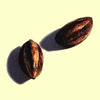
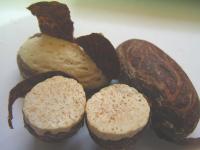
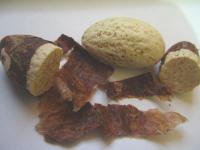
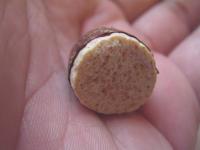
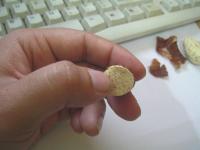
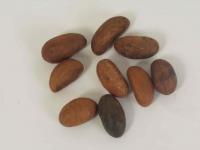
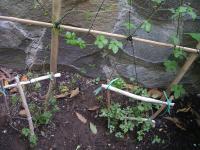
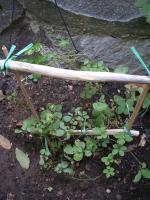
Australian pronounciation of "PSILOCYBIN"
in Mycology
Posted · Edited by -bijanto-
I'm very far from Latin, so please help me with the "botanical latin" version of these genus names:
- Nepenthes
- Strobilanthes
Referring to Wikipedia and IPA (International Phonetic Association), Nepenthes is pronounced as: /nə.pɛnˈθiz/ , with the phonems "ɛ" and "ə" being pronounced like the letters "e" and "i" in the word "pencil" respectively, the phonem "θ" being pronounced like "th" in the word "thick" or "thin" and the phonem "iz" being pronounced like "eese" in the word "cheese".
Is it okay or should i say "ni-pɛn-thayz"..?
A source says that "Strobilanthes" is pronounced as "stroh-bil-AN-theez", with "eez" sounds like "cheese". Or is it "stroh-bil-AN-thays", with "ays" sounds likes "says" ?
Am I on the right track or what...?